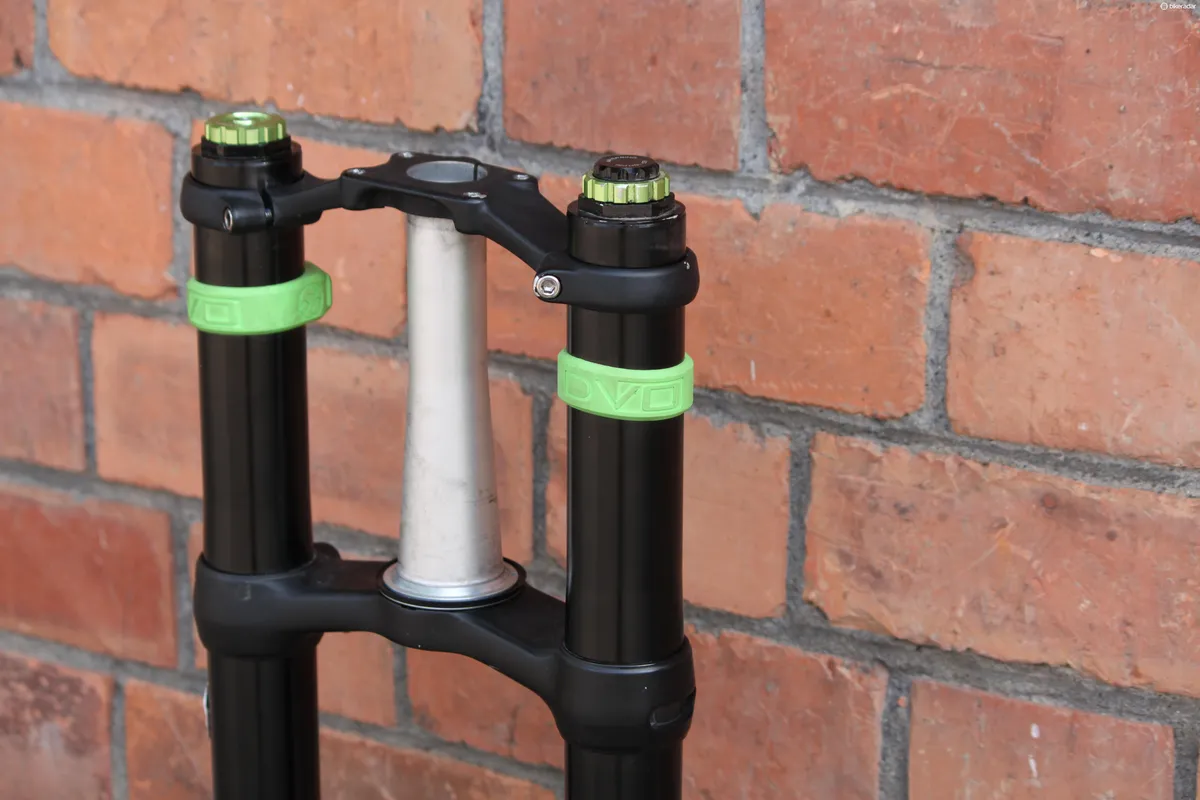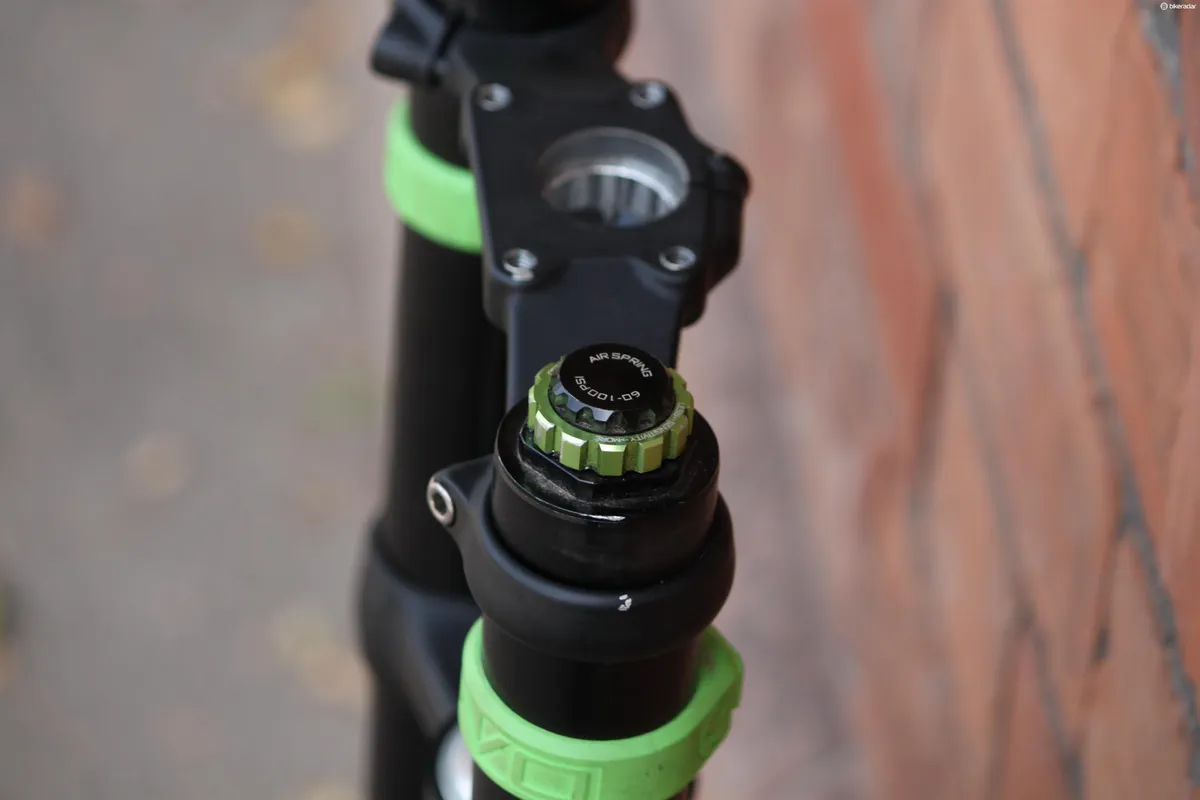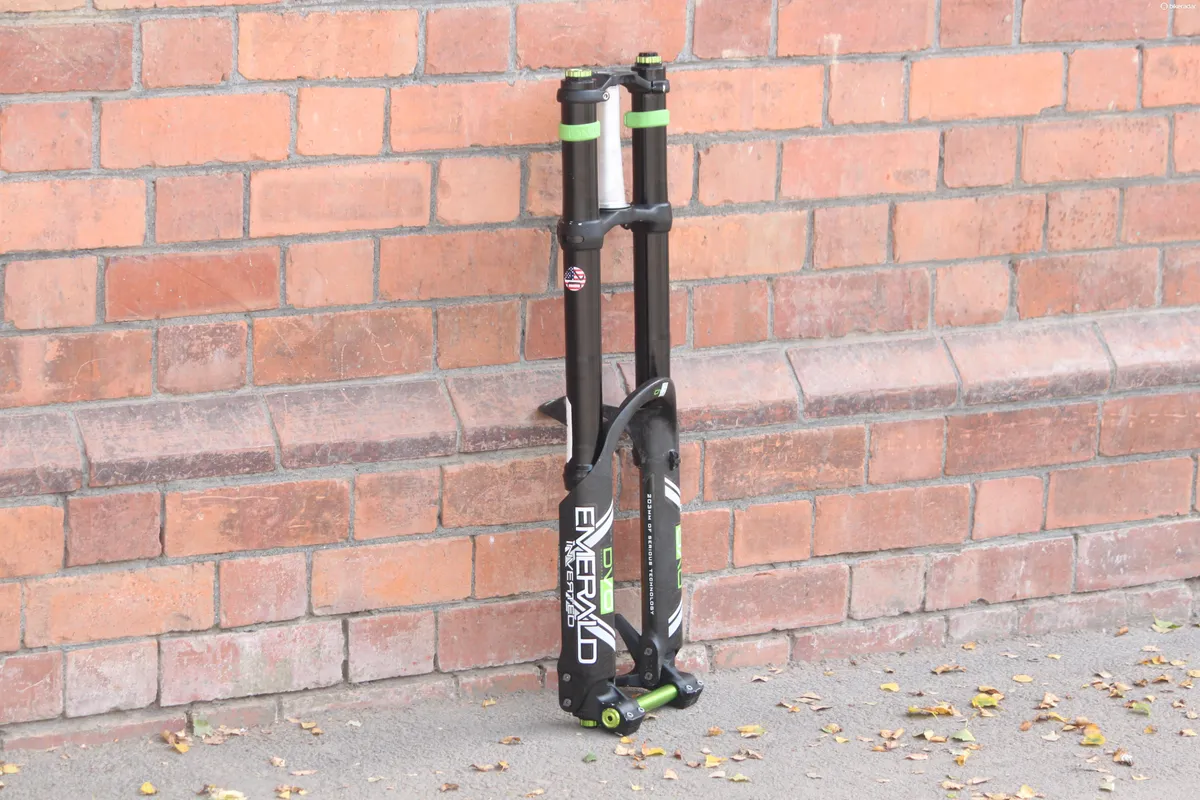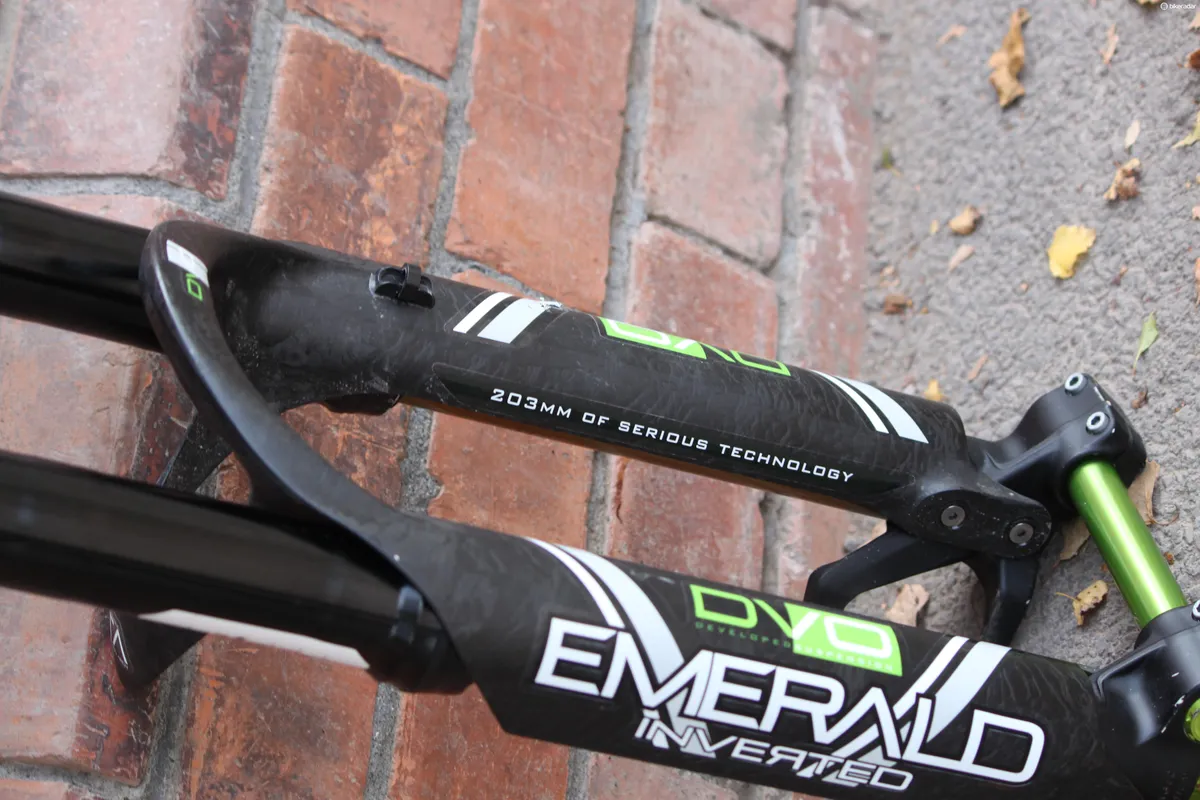Since DVO announced the Emerald downhill fork at the end of 2012, the latest offering from the US-based suspension company has been surrounded by hype.
The Emerald is firmly marketed towards riders who want highly adjustable suspension with performance that’s second to none.
The Emerald has 203mm travel and is available in 26in and 650b (27.5in) sizes. The key difference between the two is in the crowns and offset (the 26in model offers 44mm offset, while the 650b model offers 49.92mm). We tested the 26in model, bolted to our Specialized Demo 8 long-term test bike.
Fit and setup
The Emerald’s steerer is tapered, which is pretty unusual for a dual crown fork, and will mean you’ll probably need at least a new lower headset cup assembly to accommodate the larger steerer.
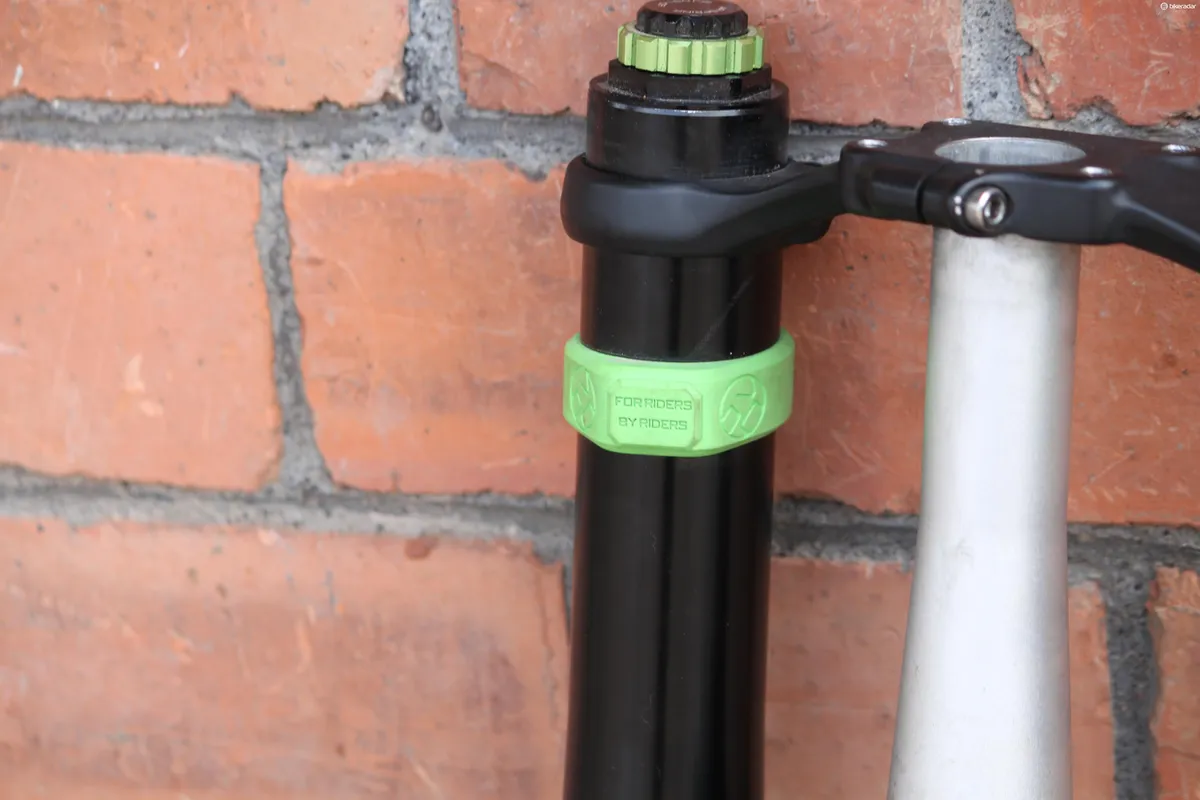
By riders, for riders. You'll need to be experienced or patient to set these up to their best
Fitting the fork is not the simplest process – expect to refer the manual quite frequently, and bear in mind you’ll need to take a number of measurements to make sure the crowns are clamping in the correct areas. There are no markings on the legs to help with this, so you’ll definitely need a tape measure on hand.
Adjustability
Both the range of adjustment and number of increments within that range are huge. The air-spring is adjustable between 60 and 100psi, while the OTT (off the top) knob adjusts the preload on the negative spring, allowing for small-bump sensitivity even with harder spring rates. There are 15 full turns of the OTT adjuster, with six clicks per turn – so 90 clicks of overall adjustment. This, along with 40 clicks of rebound adjustment, 33 clicks of high-speed compression adjustment and 27 clicks of low-speed compression adjustment, make for a complicated setup process.
Luckily, the DVO Website has a detailed setup guide to start you off and give you some base settings for your weight.
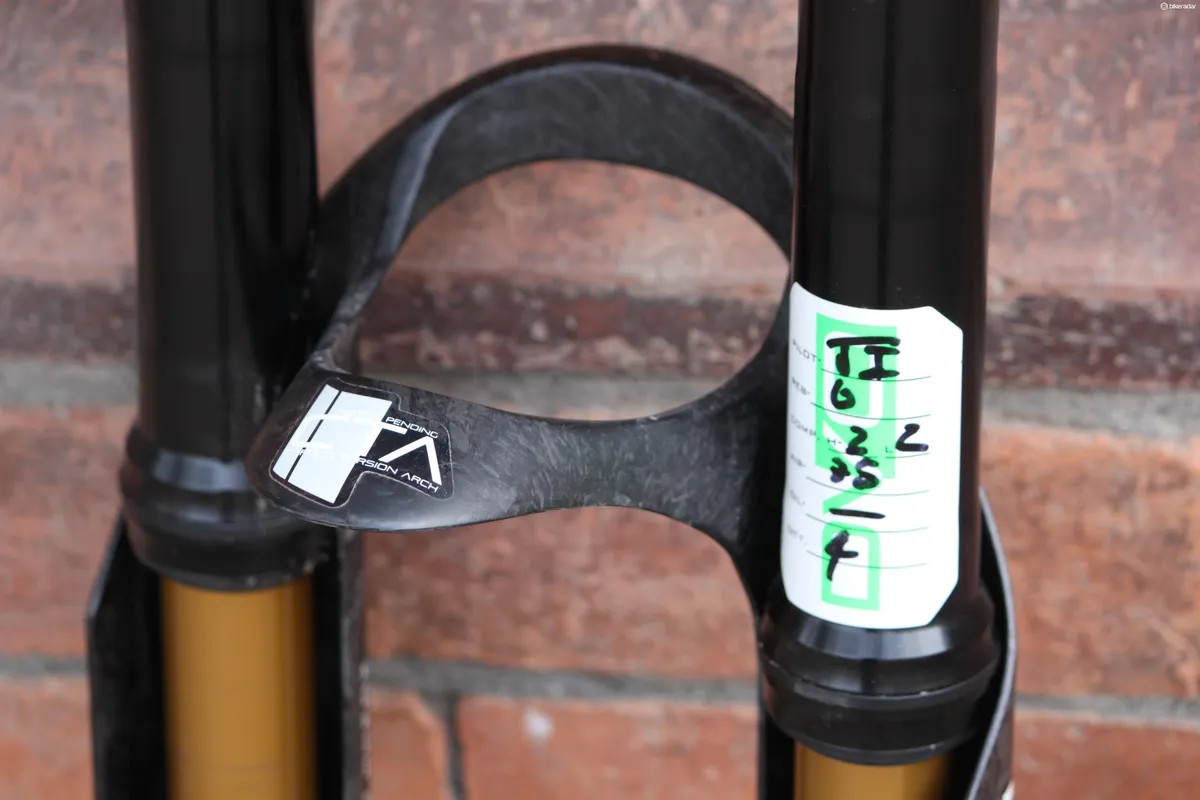
The Carbon Torsion Arch is a thing of beauty. The sticker let us keep track of our settings
Should you really feel the need to take tuning the fork to the next level, the compression shim stack can be removed via the bottom loading system. We wouldn’t recommend doing this unless you already have a great deal of tuning experience though – there’s a good reason that DVO spent the time to get the stock shim stack as refined as it is.
The ride
Before fitting the fork we were concerned that the Emerald’s 3,490g weight would have a negative effect on the way the bike rides. Our fears proved to be unfounded on the track. We tested the fork on the downhill tracks of Fort William. With the base settings for our weight dialed in, the fork still felt relatively dead and unresponsive as we rode it around the car park, but came alive once we hit the trail.
The unique inverted chassis is a big selling point for DVO. For one thing, there’s the upside down arrangement, and then there’s patent-pending Carbon Torsion Arch (CTA) bolted-on to add stiffness in exchange for a minimal weight penalty.
Although the Carbon Torsion Arch does increase stiffness, the fork still feels a bit more flexy than it should in certain situations, for example really fast, rough flat turns. However, that compliance has a positive effect on the ride the majority of the time.
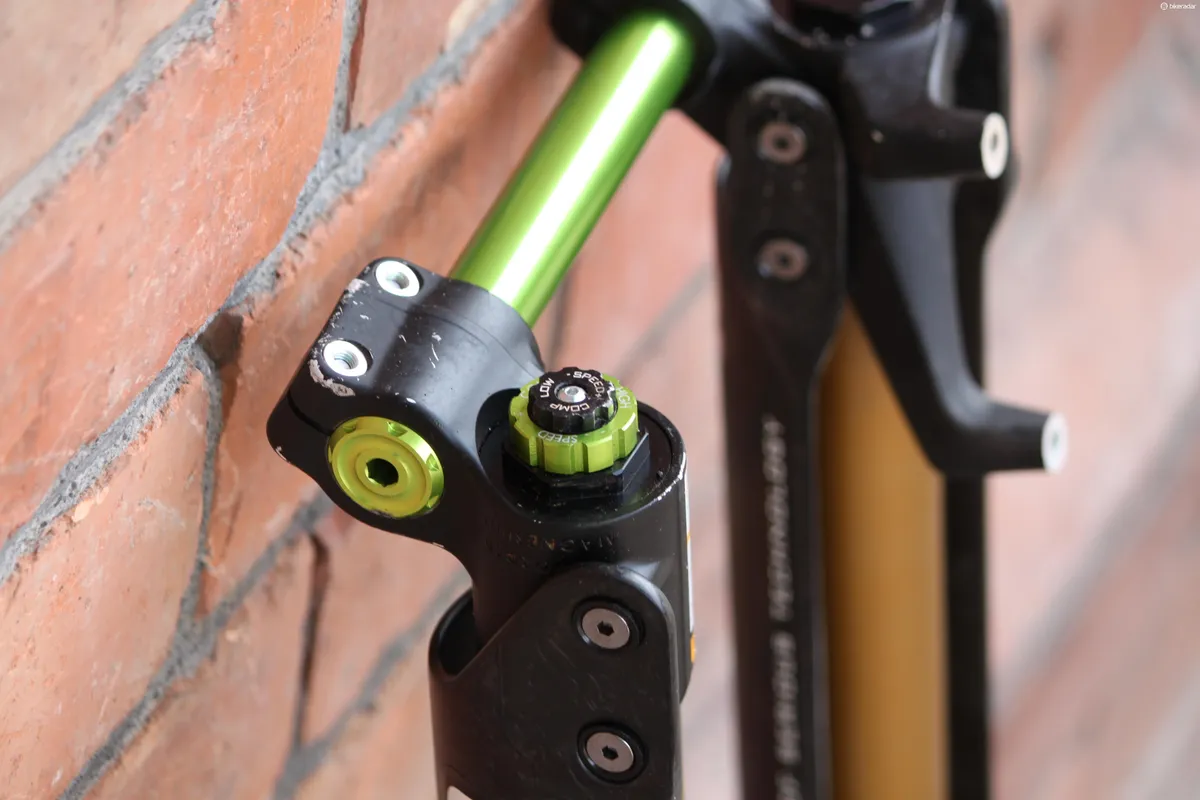
The compression adjusters are arguably prone to damage, however remain unscathed after months of smashing down trails
Although the damping feels somewhat unresponsive in the car park, on the trail it’s the opposite. We’d guess the unresponsive feeling can be rooted down to the unrivaled amount of support the Emerald gives through the stroke, while still remaining sensitive and supple over smaller stutter-bumps. This supportive yet highly sensitive damping, combined with the chassis’ compliance, gives a lot of confidence when riding fast into extremely rough sections of trail.
We did some back to back runs with the Emerald, a RockShox Boxxer R2C2 (2014) and Fox 40 Float (2015) down the infamous Val di Sole downhill track, and the Emerald gave us noticeably less arm fatigue than the other forks, while providing noticeably better grip than the 40.
It did take us a fair amount of time and adjustments to make the Emerald feel this good, and we were helped out with some setup advice from DVO at the Fort William World Cup.
The bottom line
The Emerald is definitely a finely-tuned ride, ideal for experienced riders who want the very best out of their suspension. Unfortunately, the price is high and the fork is heavier than we’d like

